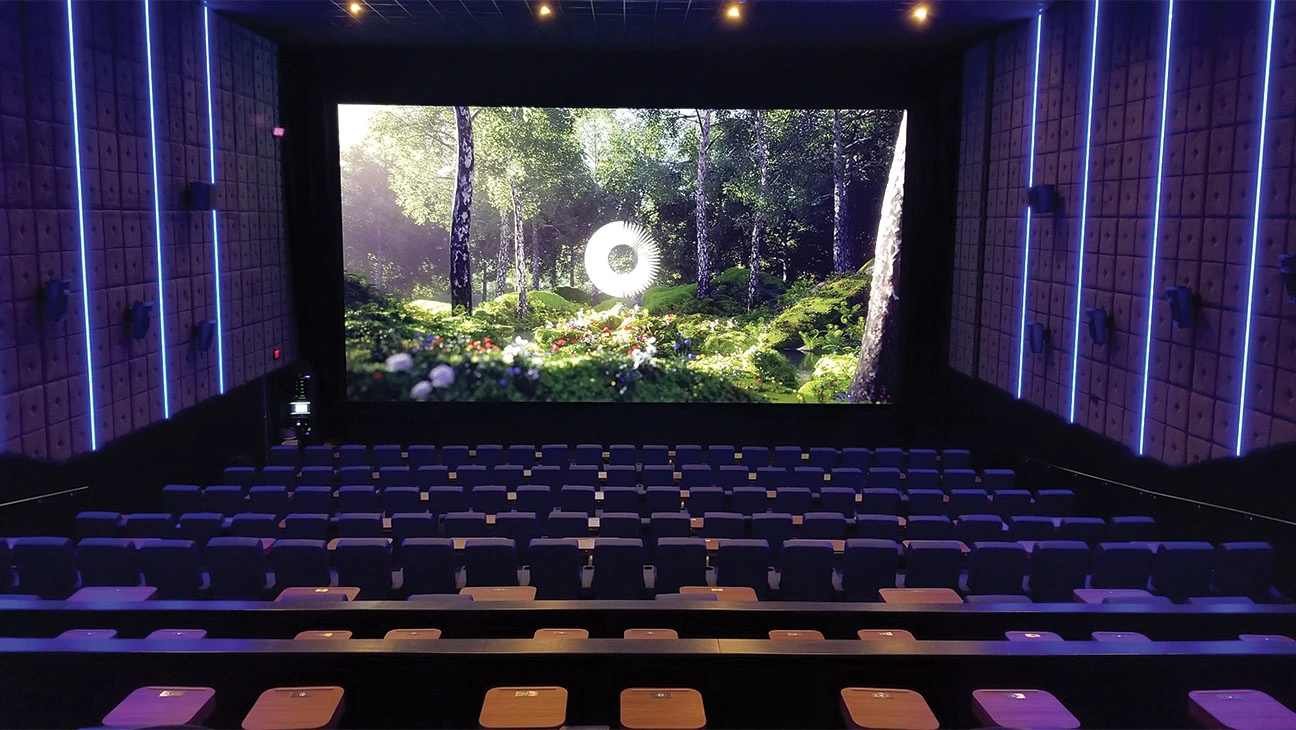LED Screens for Theaters: Is the Buzzy Tech Worth the Cost?
16 April, 2023

Display developers such as Samsung are eyeing movie theaters to install LED walls as a screen replacement to projection systems, but the installments can be pricey and use a ton of power.
Samsung and LG are among a number of tech companies that are quietly making a new push to Hollywood on the potential of LED display tech to replace theater projection systems that have been used since the birth of cinema. It would be a radical change.
A projection system, true to its name, projects images onto the big screen. An LED wall is akin to a sophisticated, massive TV screen, and its use would render the projection booth a thing of the past. At this early stage, major U.S. theater chains are not using the tech.
The companies are hesitant to share many details on their plans — Samsung’s Onyx LED displays for cinema are installed in roughly 100 cinema auditoriums worldwide, including at The Culver Theater in Culver City — but Hollywood insiders have recently seen new demonstrations of the tech, The Hollywood Reporter has learned.
“As with any new technology, there are a lot of very positive and some very scary things,” says director and cinematographer Jay Holben, who worked with this tech — categorized in the industry as “direct view” displays — as part of an American Society of Cinematographers-led project to create standardized test material for all types of displays.
Dominic Glynn, senior scientist at Pixar Animation Studios, adds: “We are, generally speaking, very strong supporters of the new creative opportunities that these technologies bring.” Glynn calls such direct view screens “very ambitious and very capable” in areas such as high dynamic range and brightness. (Pixar released Lightyear on one such screen at Houston’s Star Cinema Grill for paying audiences in 2022.)
But there’s still a lot of work to be done, and for Holben and others, a “detrimental” concern is how sound is handled. This is because in traditional cinema, there are speakers directly behind the screen, which is not doable with LED panels. But the biggest issue might be how costs will factor into theater owners’ decisions about whether to adopt this technology.
Holben notes that pricey LEDs also involve “significantly” more power draw and heat output (requiring more air conditioning) compared with projection systems, adding: “They also require a rigging metal structure that isn’t normally present to hold the weight of the screens, which can vibrate with sound. They are all pretty big expenses for theater owners.”
Tech developer Barco, meanwhile, is in the process of introducing its HDR-capable “light steering” laser projection systems to Hollywood, while, at least for now, keeping its LED displays focused on markets such as digital signage. “There are some fundamental properties of LEDs that don’t make them a good match with the cinema market … the price point is the most critical,” says Barco’s Tom Bert, a senior member of the product management team in its Entertainment division. (Similarly, Sony’s CLED technology is currently aimed at other uses, including virtual production and color grading rooms.)
Many Hollywood groups are already working to make LED displays a viable option in cinema. In late 2022, studios consortium Digital Cinema Initiatives released its technical specification for direct view display — effectively a recommended technical blueprint for showing its movies with these new systems.
Several such displays, including tech from Samsung and LG, have since been certified as DCI-compliant. Among the work DCI still hopes to accomplish is creating a spec for a standard Digital Cinema Package (the digital equivalent of a film print) that could be used in LED-based auditoriums without the need to create a separate version of the movie.
Looking ahead, Pixar’s Glynn says the creative opportunities are there to take advantage of the tech, but filmmakers must control their use. “If [direct view displays] gain enough excitement amongst the audiences, there would be a really compelling reason to sort of invite audiences back to the big screen to see something that perhaps they didn’t see first go-round, or they wanna revisit in this, in this new format,” he notes, so long as “we don’t exploit the technology for its own sake. It always has to be in service of the story or complementary to the narrative.”
This will be among the topics addressed Saturday when the NAB Show opens in Las Vegas. The Society of Motion Picture and Television Engineers will present a series of panels that will explore the future of cinema.
Useful Links:
Source: www.hollywoodreporter.com
